Making smooth and creamy mashed potatoes, a food mill and a ricer are two common kitchen tools that can be handy. While both serve the purpose of pureeing cooked vegetables, they differ in functionality and design.
A food mill is a kitchen tool that uses a hand-cranked mechanism to push cooked vegetables through small holes in a bottom plate. This results in a smooth and consistent texture, free from lumps or skins. On the other hand, a ricer is a manual kitchen tool that forces cooked vegetables through a perforated disk using a lever.
This creates a fluffy and light texture, similar to whipped cream, with no lumps. The choice of which tool to use depends on personal preference and the type of dish being prepared, even though both tools are efficient in their own way. Understanding the differences between a food mill vs ricer can help you choose the right tool for your cooking needs.
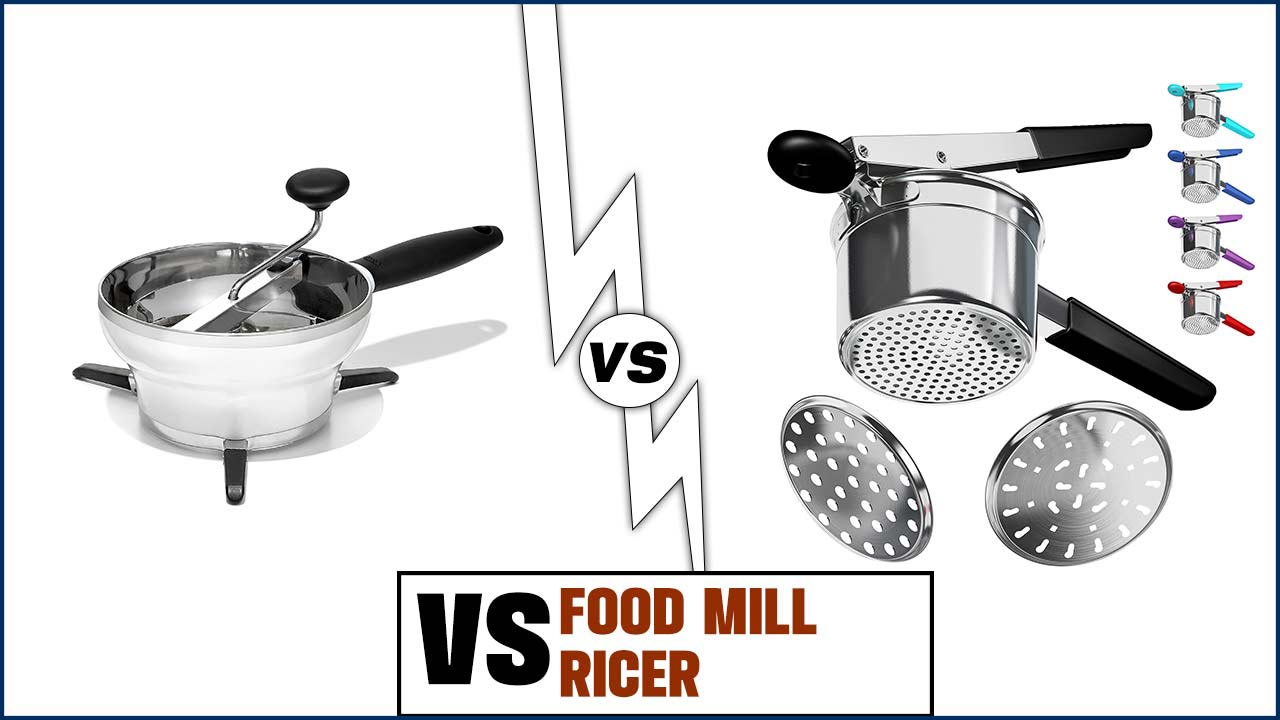
Definition Of Food Mill And Ricer
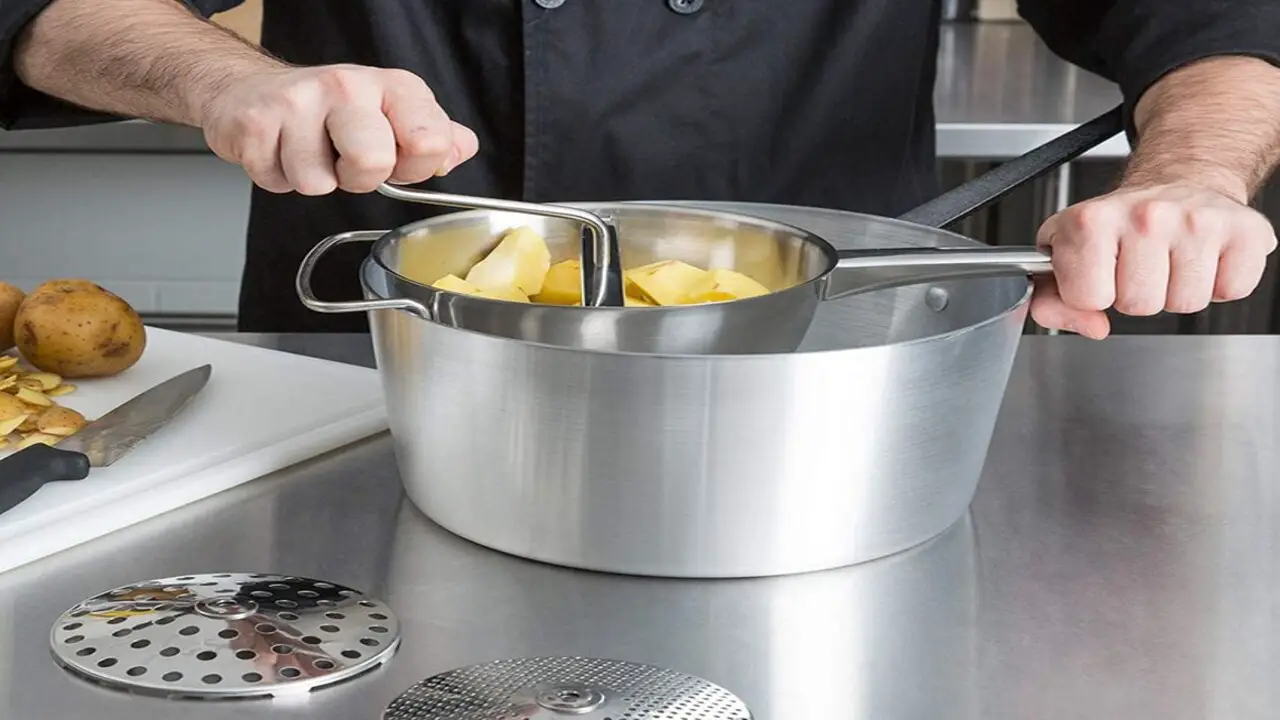
A food mill and a ricer are two kitchen tools handy to process and prepare food. A food mill is a hand-cranked device that uses interchangeable discs to puree or mash soft foods, such as cooked fruits or vegetables, into a smooth texture. It typically consists of a bowl with a crank handle and a perforated disk that rotates against the food to break it down.
The size of the holes in the disk can be varied to produce different textures, from coarse puree to fine sauce. Food mills are useful for making baby food, sauces, and soups. A ricer, also known as a potato ricer, is a device handy to mash boiled potatoes or other cooked vegetables into a fine, fluffy texture.
It consists of a hopper with small holes, similar to a grater, and a plunger that pushes the food through the holes, creating small, rice-sized pieces. This method ensures you can evenly mash the potatoes without making them gummy or lumpy. Ricers are also useful for making spaetzle, gnocchi, and other dishes that require finely mashed potatoes or vegetables.
Food Mill Vs Ricer – Unraveling The Differences
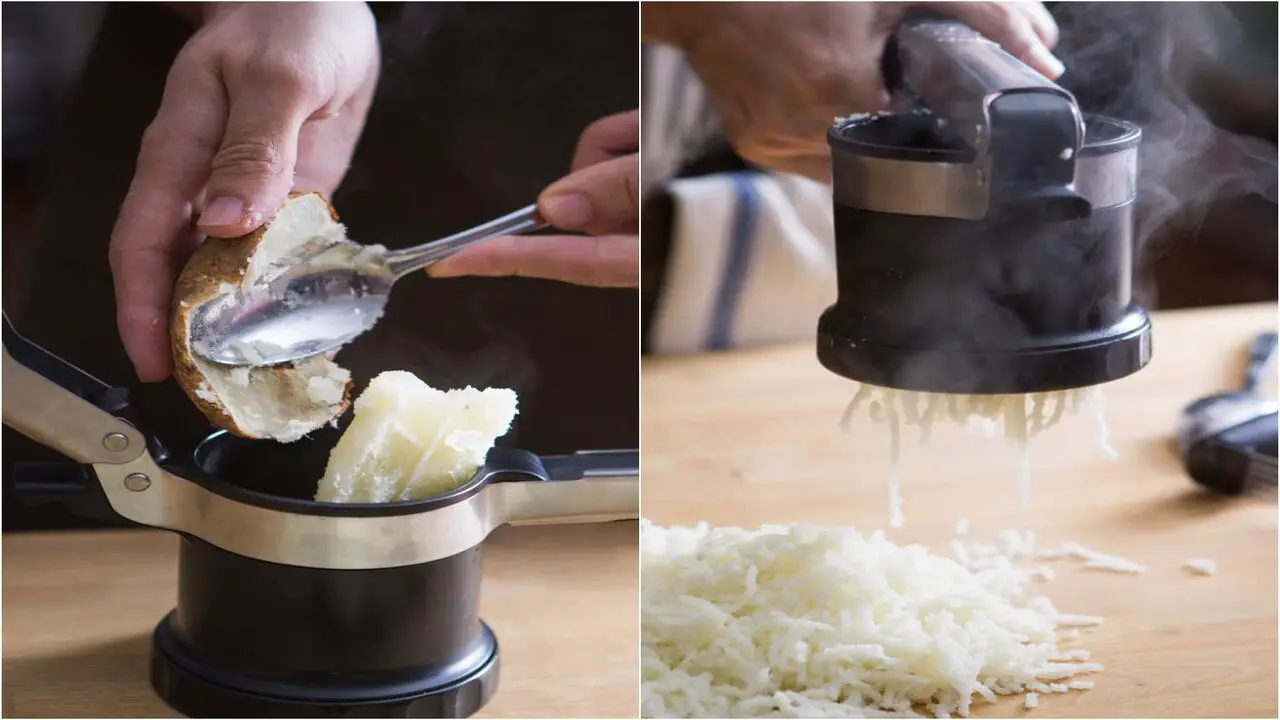
A food mill and a ricer are both kitchen tools handy for different purposes, and their popularity varies based on the type of cuisine and individual cooking preferences. A food mill, rotary food mill or a module is a kitchen device handy to process and purée soft foods, particularly fruits and vegetables.
Food mills are commonly used for making sauces, soups, and purées. Food mills have been used in kitchens for many years and are popular in traditional cooking, especially in regions with a strong emphasis on sauces and purées.
A ricer, also known as a potato ricer or a food ricer, is a hand-operated tool handy primarily for mashing and creating a light, fluffy texture for cooked potatoes. It consists of a hopper with small holes and a plunger-like mechanism.
When you press the plunger, the cooked potatoes are forced through the tiny holes, resulting in rice-like potato strands. Ricers are commonly used to make mashed potatoes and other mashed root vegetables. Ricers are relatively popular and widely used, especially in cuisines where mashed potatoes are a staple dish.
They are valued for creating a smooth and creamy texture without overworking the potatoes, which can make them gluey. Ricers are also handy for making baby food, spaetzle, and gnocchi. Here are explained with details about food mill vs ricer.
How They Work: Food Mills And Ricers
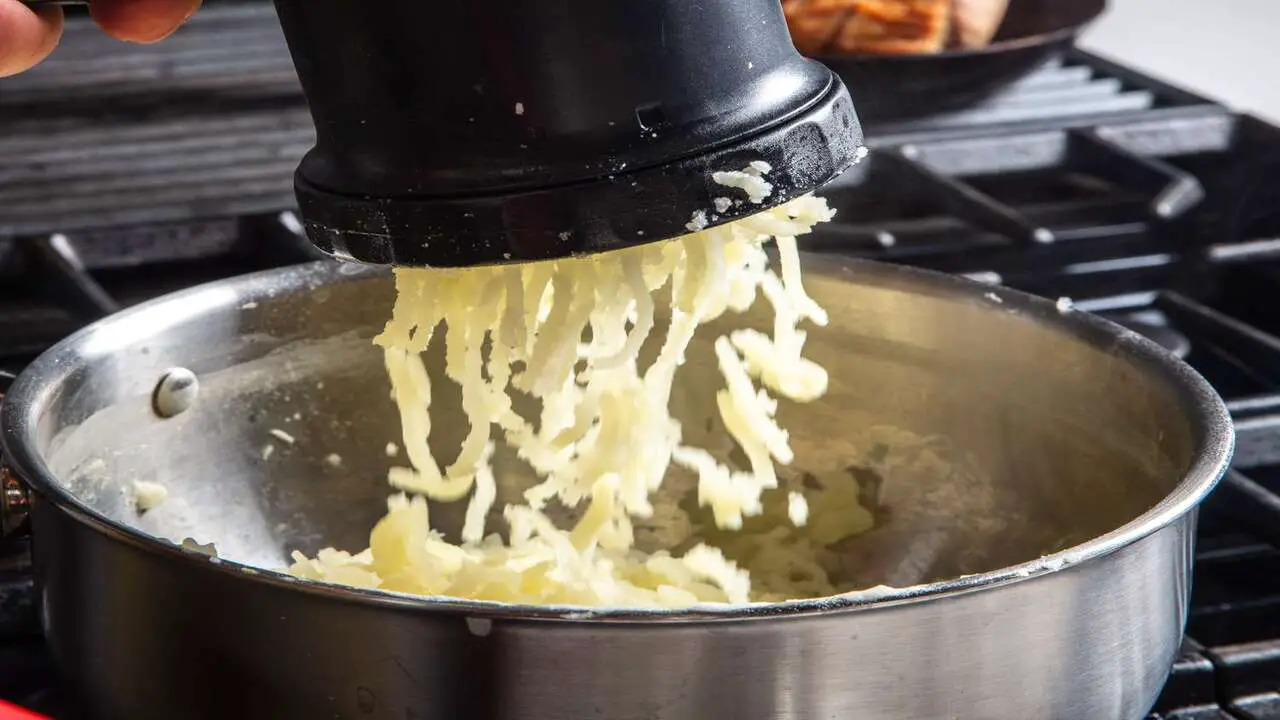
Food mills and ricers may seem similar, but their mechanisms are distinct. Food mills place cooked or softened foods in a hopper, which then goes through a milling disk with small perforations. The crank handle rotates the disk, pushing the food through the holes and separating the pulp from the seeds and skins.
Ricers, on the other hand, have a bowl with tiny holes and a plunger. The food is forced through the holes by pressing down on the plunger, resulting in smooth, lump-free purees. The key difference lies in the texture they create and the type of foods they handle best.
Food Mill And Ricer: Which Is More Versatile?

The food mill takes the lead. Its ability to process a wide range of soft foods, including fruits, vegetables, and cooked meats, makes it a versatile tool for various recipes. From making applesauce and soups to tomato sauce and baby food, a food mill produces consistent textures.
While ricers are excellent for achieving fluffy mashed potatoes and similar dishes. Their scope of use is more limited to root vegetables and specific fruits like citrus. So, regarding versatility, the food mill is the more adaptable option.
Food Mill And Ricer: Which Is Easier To Use?
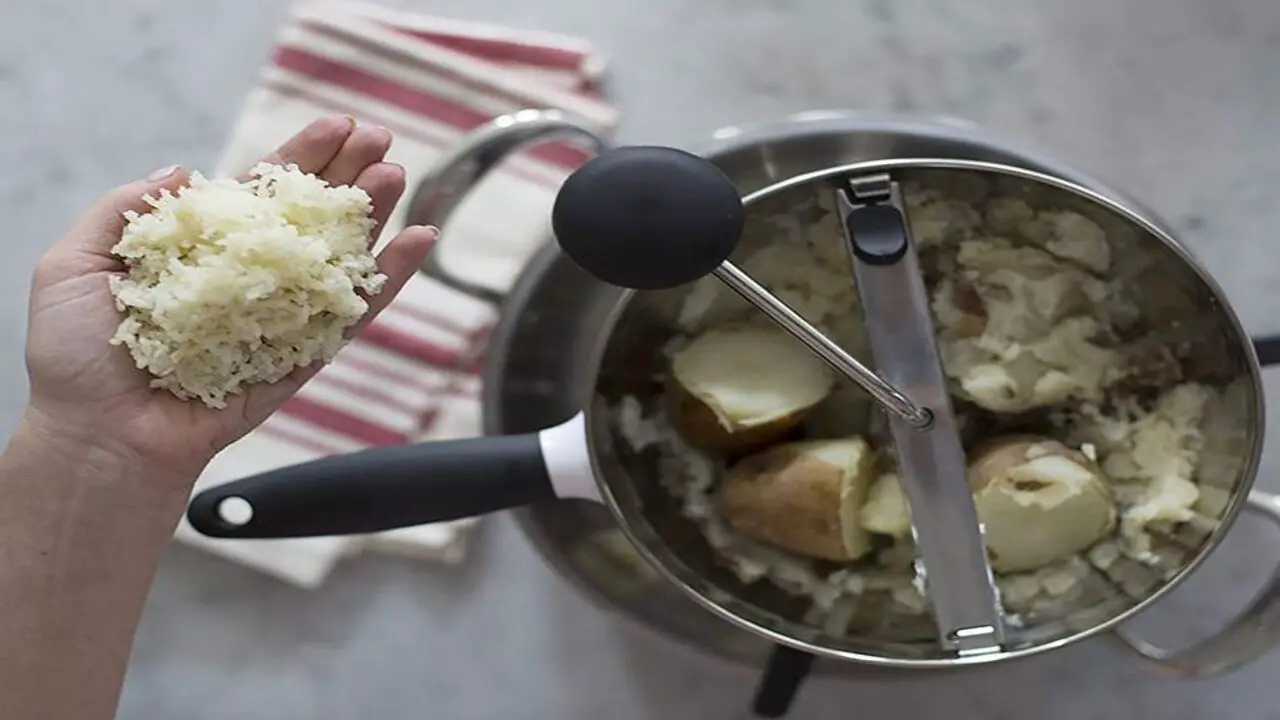
In terms of ease of use, the ricer takes the upper hand. Its simple design, with just a bowl and plunger, requires minimal effort. You must load the food, press down, and obtain the desired consistency. It is also easy to clean due to its straightforward structure.
Although not overly complicated, food mills can be more involved in assembly and operation. The need to crank the handle and disassemble parts for cleaning might require more effort. However, their ability to handle larger quantities at once can offset the slight complexity for many users.
The Benefits Of Using A Food Mill And Ricer
Both food mills and ricers offer valuable benefits in the kitchen. The food mill’s ability to separate seeds and skins from the pulp ensures smoother textures and enhances the overall quality of the dish. It also works well with hot and cold foods, making it versatile for various recipes.
On the other hand, the ricer’s exceptional ability to produce light and fluffy purees makes it ideal for certain dishes like mashed potatoes or lemon zest. Its simple operation and easy maintenance add to its advantages, especially for those seeking quick and efficient food preparation.
Price Comparison: Food Mills And Ricers
Food mills tend to be slightly more expensive than ricers. The food mill’s complex design and additional components increase the cost. However, the price difference is not substantial, and both tools are generally affordable and offer good value for their functionality.
Higher-end models of food mills and ricers may come with extra features and sturdier construction, affecting their respective price ranges. Ultimately, the final decision will depend on the user’s specific needs and budget.
Cleaning And Maintenance Of Food Mills And Ricers
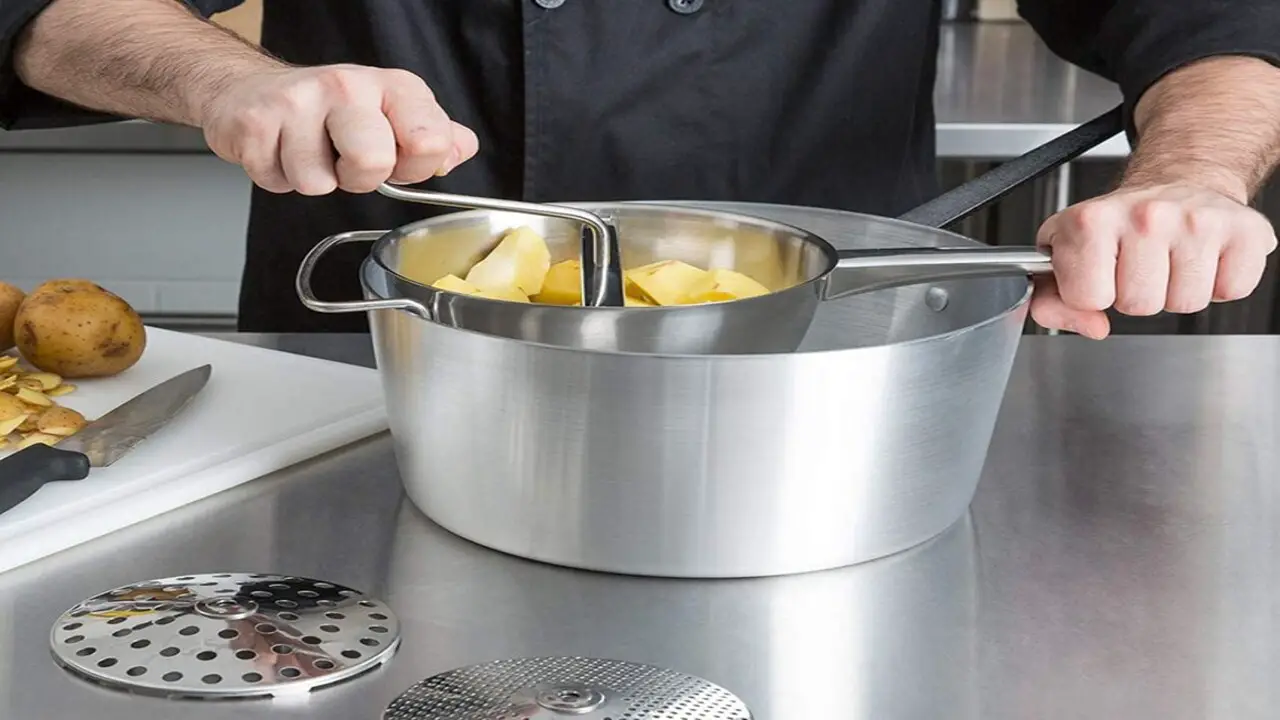
Regarding cleaning and maintenance, ricers often have the advantage of being easier to take apart and clean. Most ricers are dishwasher-safe or can be swiftly hand-washed due to their uncomplicated construction. This makes them more convenient for everyday use.
While not overly difficult to clean, food mills have more components and tiny crevices that can be trickier to reach. Some models are dishwasher-safe, which simplifies the cleaning process. However, others may require more thorough hand-washing to ensure all parts are spotless.
Durability And Longevity: Food Mill And Ricer
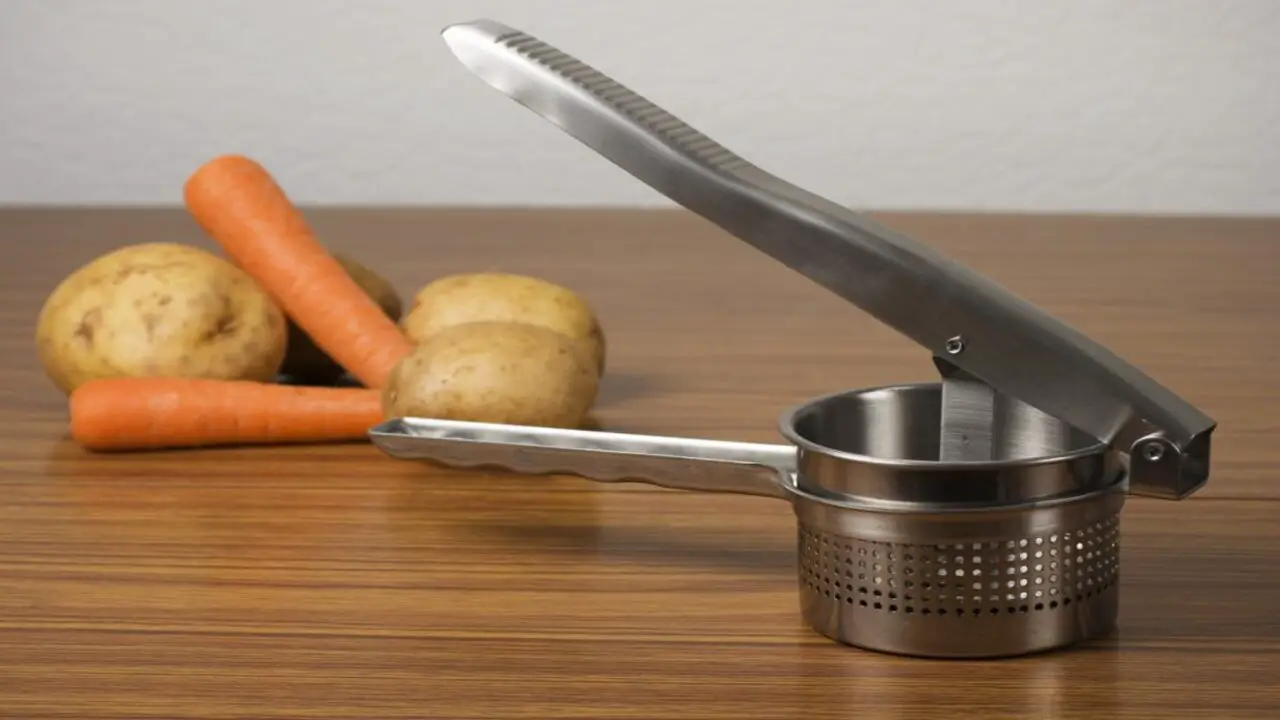
Both food mills and ricers are typically constructed with durable materials like stainless steel or heavy-duty plastics. With proper care, both can last for years, making them reliable additions to any kitchen. With their robust construction, food mills can withstand heavy use and are less prone to wear and tear.
Their mechanisms are generally more resilient due to the sturdy metal milling disk. Similarly, ricers, with their straightforward design, are also quite durable. Since they have fewer moving parts, there is less chance of mechanical failure. This makes them a long-lasting option for preparing mashed foods.
Portability And Storage: Food Mill And Ricer
In terms of portability, ricers often have the edge. Their compact and simple design makes them easy to store in kitchen drawers or cabinets, and they are lightweight enough for travel or camping.
With their larger size and more components, food mills might be bulkier and less suitable for travel. However, they are still manageable to store in most kitchen spaces, and many models come with collapsible handles or detachable parts to save space.
Conclusion
Choosing between a food mill vs ricer, specificity is key. Both tools have advantages and limitations; the choice ultimately depends on the desired results. A food mill is ideal for making purees, sauces, and soups with a smooth consistency, while a ricer is perfect for making fluffy mashed potatoes and other root vegetables.
Both tools can yield successful outcomes if used correctly and for their intended purposes. It is important to remember that a recipe’s success depends on the proper use of kitchen tools, including the food mill and ricer. So whether you choose a food mill or a ricer, follow the recipe instructions carefully and use the tool that best fits the specific task.
FAQ’s:
1.What Is The Best Way To Store Leftovers In The Refrigerator?
Ans: To safely store leftovers, place them in airtight containers or wrap them tightly in plastic or aluminum foil. Label and date the containers, and store them in the refrigerator within two hours of cooking.
2.How Can I Tell If An Avocado Is Ripe And Ready To Eat?
Ans: Gently squeeze the avocado; it is ripe if it yields slightly and feels firm but not too hard. Additionally, the color should be dark green to black, and the stem should come off easily.
3.What Are Some Healthy Alternatives To Refined Sugar In Baking?
Ans: You can use natural sweeteners like honey, maple syrup, or agave nectar to replace refined sugar in baking. Also, mashed bananas or applesauce can add natural sweetness and moisture to your recipes.
4.How Can I Prevent My Cookies From Spreading Too Much When Baking?
Ans: To prevent cookies from spreading excessively, ensure the butter or margarine is not too soft, use parchment paper on the baking sheet, and chill the dough in the refrigerator for at least 30 minutes before baking.
5.What Is The Best Way To Thaw Frozen Meat Safely?
Ans: The safest method is to thaw meat in the refrigerator. Alternatively, you can use the cold water method by placing the sealed meat in a container under cold running water. Never thaw meat at room temperature.